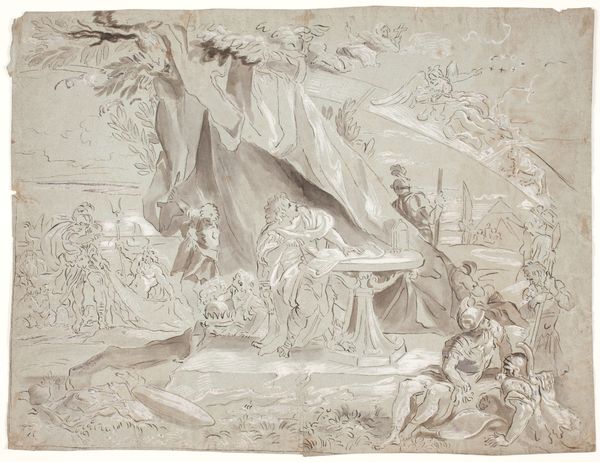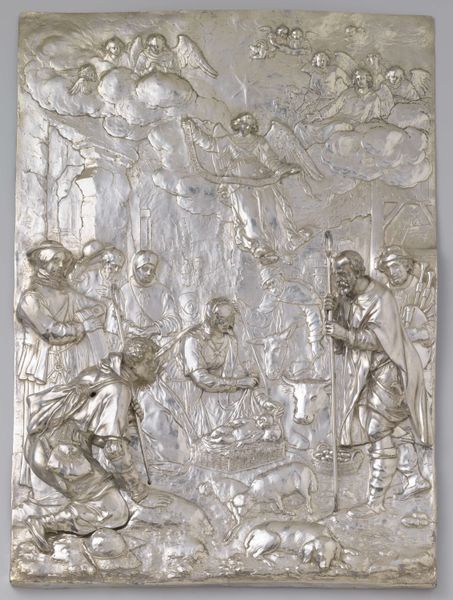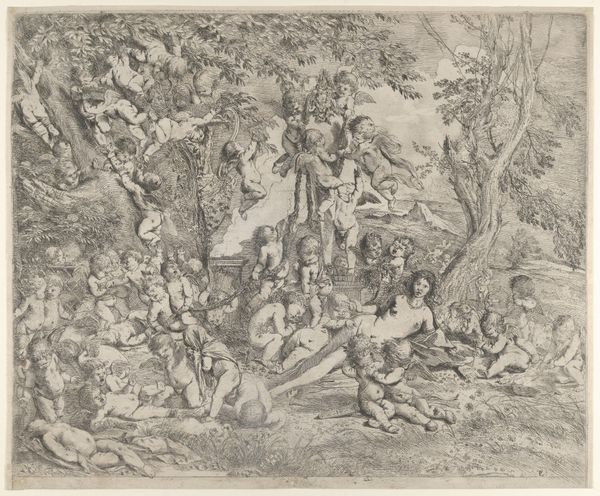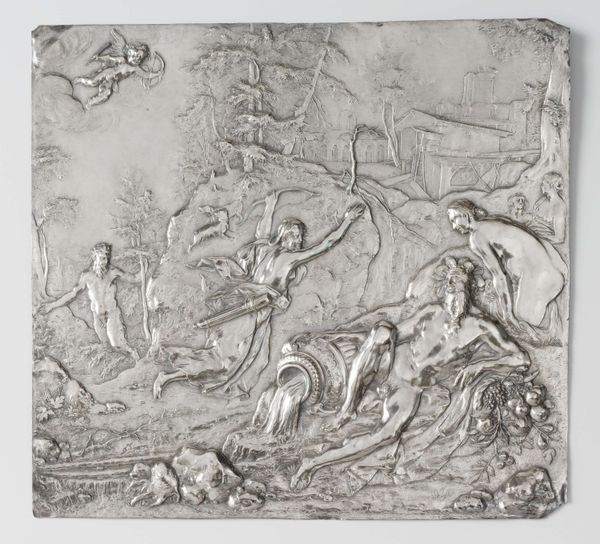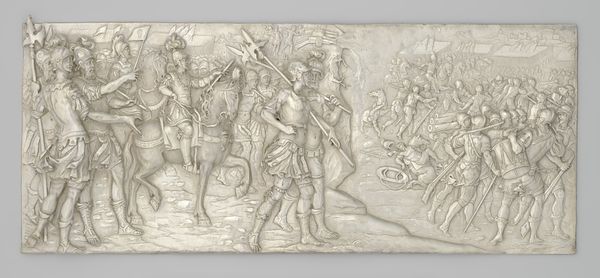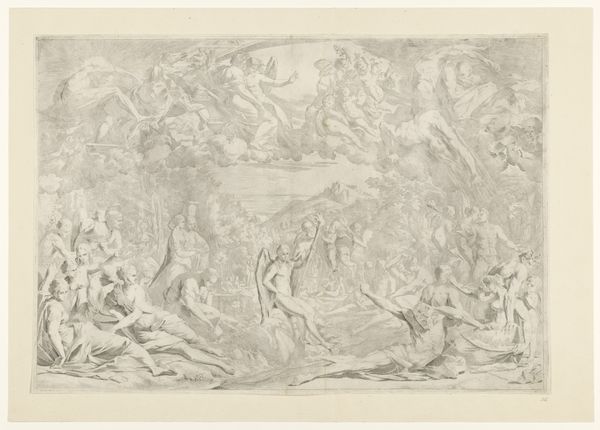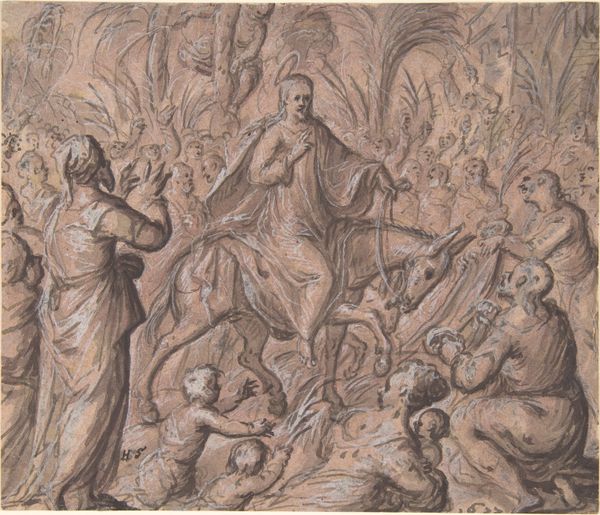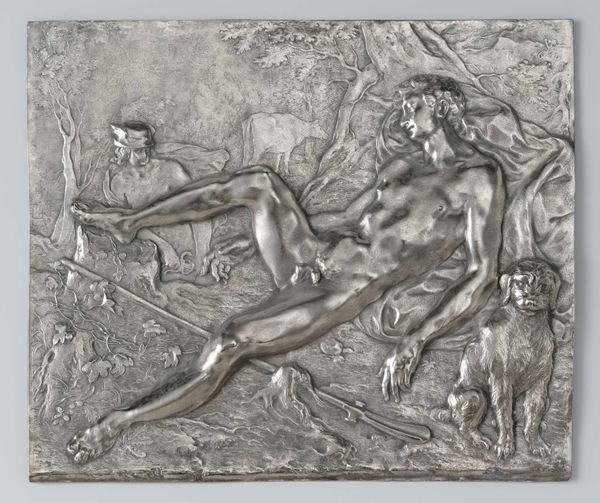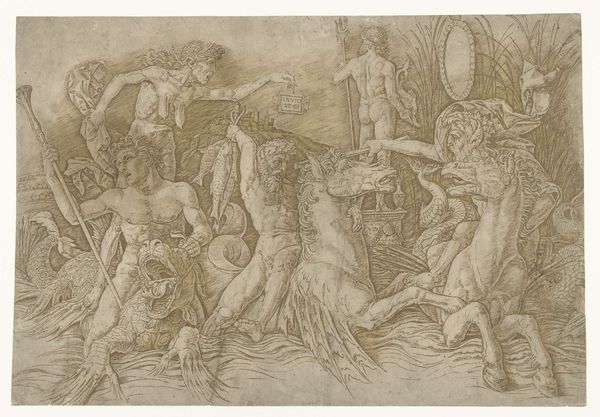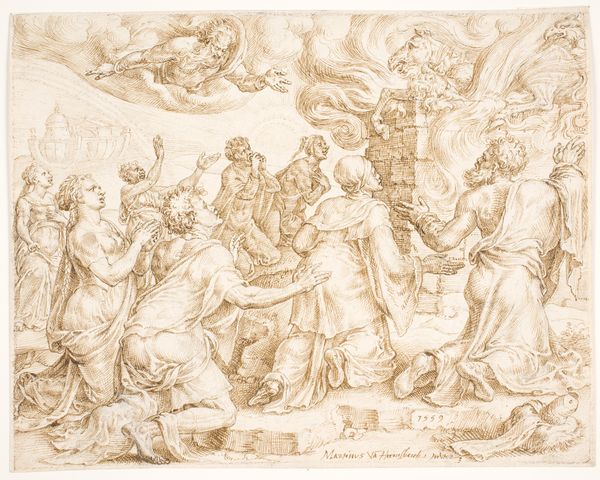
silver, relief, sculpture
#
silver
#
allegory
#
narrative-art
#
relief
#
mannerism
#
figuration
#
geometric
#
sculpture
#
group-portraits
#
history-painting
#
academic-art
Dimensions: height 25.4 cm, width 33.6 cm, thickness 0.4 cm
Copyright: Rijks Museum: Open Domain
Curator: What a striking silvery scene. Editor: Indeed. Here we have Paulus Willemsz. van Vianen's "Minerva and the Muses," crafted in 1604. It’s currently residing here at the Rijksmuseum, and what’s especially compelling is that it's rendered entirely in silver relief. Curator: The metallic sheen gives it such an ethereal quality, almost otherworldly. The figures emerge from this gleaming plane like visions or shimmering memories. Is it the way light plays on the relief carving that gives them such an imposing stature? It definitely evokes a sense of classical grandeur. Editor: Van Vianen was a master of the Mannerist style. The idealized figures arranged in that idyllic landscape really highlight the intellectual and artistic climate of the period. Minerva, with her spear and helmet, stands tall alongside the Muses representing art, literature, and music. I find that juxtaposition powerful—Minerva as a protector of these cultural realms. Curator: Absolutely, and they are definitely not static, as we know muses to be. I get a real sense of dynamic energy emanating from their placement and movement. There’s a feeling of collaborative inspiration flowing through this arboreal amphitheater. They look like they could suddenly burst into song, you know? The composition reminds me of frozen theatre... but make it poetry. Editor: Well, that speaks to how artistic patronage was used by the elites. It legitimized power via claims about artistic sophistication and elevated cultural achievement, both tied to Mannerism's aristocratic, somewhat theatrical bent, really. Silver, in its luxuriousness, was a perfect medium, too, for these claims. Curator: It’s almost ironic, isn't it? Depicting these classical figures in a medium that embodies wealth. I mean, what does it tell us about art and power when artistic vision gets framed, literally, by such ostentatious displays? Still, despite the baggage, this tableau of mythology remains thought provoking in its artistic design. Editor: I think it points toward a timeless question for any patron of the arts: Who gets to be a muse? How is 'inspiration' always already inflected with worldly realities, in its selection and modes of celebration? Curator: The questions always linger and inspire more questions, just like these Muses, hopefully!
Comments
rijksmuseum over 2 years ago
⋮
Paulus van Vianen often derived the subject of his plaquettes from Ovid’s Metamorphoses, as is the case here. The goddess Minerva visits the Muses because she wishes to see the sacred spring that the winged horse Pegasus caused to gush forth near them with a blow of his hoof.
Join the conversation
Join millions of artists and users on Artera today and experience the ultimate creative platform.
